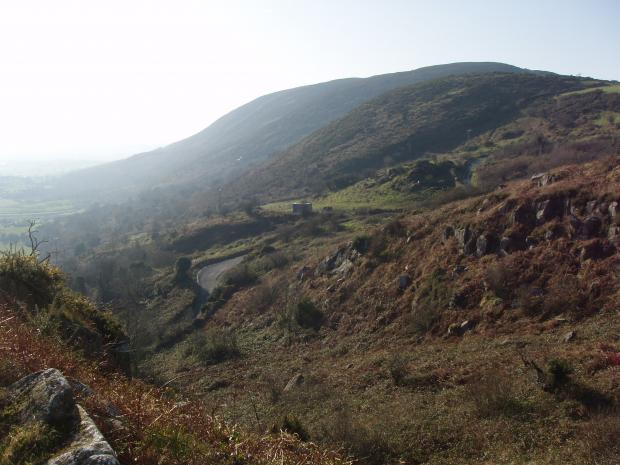
The Ring of Gullion is one of the finest examples of a ring dyke in the British Isles. It is of Palaeogene age, some 56-58 Ma. The volcanic rocks found here are of international geological importance, having played an important role in the development of a number of theories of the development and interaction between igneous rocks. At Lislea, the inner and outer contact of the ring dyke is exposed, xenoliths in the ring dyke are observed along with crushing of the emplaced and pre existing rocks. The area is of special scientific interest because of its geology, which is expressed in outcrop at Lislea.
The Slieve Gullion volcanic complex, of which Lislea is a part, is the finest example of a Tertiary igneous centre in Ireland and is among the best topographic expression of a ring-dyke system in the British Isles. The rocks found here are of international geological importance, having played an important role in a number of theories related to the development of and interaction between igneous rocks.
The Slieve Gullion complex is historically important as it has featured in a number of major geological debates on the nature of igneous rocks and the processes by which they can be formed.
At Lislea, the inner and outer contacts of the ring dyke, composed of porphyritic granophyre, can be seen. The intruded relationship with the host Newry granodiorite can also be seen. Contacts within the granophyre show that it developed as a result of many intrusive pulses. Near the centre of the granophyre dyke, large, alien blocks of well rounded, fine-grained granitic rock, up to a metre across, can be seen. The origin of these blocks has been much debated, some geologists believing them to be altered Newry granodiorite, transformed by the more recent Palaeogene igneous activity.
Related articles
- ASSI Guidance for Public Bodies/Competent Authorities
- Coastal Areas of Special Scientific Interest
- Conservation Management Plans (CMPs)
- European Marine Sites - Marine Special Areas of Conservation and Special Protection Areas
- Introduction to Conservation Management Plans (CMPs) for Northern Ireland’s Special Areas of Conservation
- Marine Conservation Zones
- Marine Protected Areas
- Marine Ramsar sites
- Portrush Coastal Zone
- Special Areas of Conservation
- Special Areas of Conservation for Harbour porpoise
- Special Protection Areas
